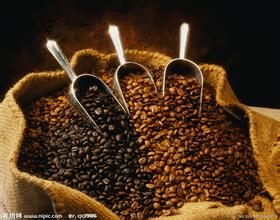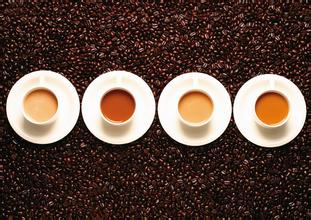Origin of Nicaraguan coffee beans
Caffeine: it has a particularly strong bitter taste and stimulates the central nervous system, heart and respiratory system. Appropriate amount of caffeine can also reduce muscle fatigue and promote digestive juice secretion. Because it promotes kidney function, it is diuretic and helps the body to expel excess sodium ions from the body. But eating too much can lead to caffeine poisoning.
Tannic acid: the boiled tannic acid will decompose into pyrouric acid, so the coffee that has been brewed for too long will taste worse.
Fat: the most important ones are acid fat and volatile fat.
Acidic fat: that is, fat contains acid, its strength will vary according to the type of coffee.
Volatile fat: is the main source of coffee aroma, will emit about 40 aromatic substances.
Protein: the main source of calories, the proportion is not high. Most of the protein in coffee powder will not dissolve out when brewing coffee, so the intake is limited.
Sugar: coffee beans contain about 8% sugar. After baking, most of the sugars are converted to caramel, which browns the coffee and combines with tannins to produce sweetness.
Fiber: the fiber of raw beans will be carbonized after baking and combine with caramel to form the hue of coffee.
Minerals: contains a small amount of lime, iron, phosphorus, sodium carbonate and so on.
Coffee processing editor
Roasted coffee beans
Peeling
Remove the peel and most of the flesh by mechanical, manual, or other means.
Ferment
By removing the mucus and film outside the core by fermentation, each manufacturer has its own fermentation time because the length of fermentation time will affect the flavor of coffee.
Drying
The drying method is mainly divided into natural sun drying and natural air drying. Too high water content can easily cause mildew and worms of raw coffee beans. High water content can also cause high acidity of coffee.
Baking
Through roasting, raw coffee beans can release the special aroma of coffee, and each coffee bean contains its aroma, sour taste, sweetness and bitterness.
From raw beans, light roasting, medium roasting to deep roasting, the water is released again and again, the weight is reduced, but the volume slowly expands, the color of the coffee beans deepens, the fragrant oil is gradually released, and the texture becomes crisp. In raw beans, there is a lot of chloric acid, which disappears with the baking process, releasing familiar and pleasant fruit acids such as acetic acid, citric acid and malic acid in wine.
Shallow baking: when the beans make the first light sound, the volume expands at the same time, and the color changes to a delicious cinnamon color. Acidity dominates the flavor of shallow roasted beans, texture and taste have not been brought into full play, generally used as canned coffee.
Medium roasting: coffee beans show an elegant brown color. This method of baking is also called city roast. Medium roasting can not only preserve the original flavor of coffee beans, but also moderately release aroma, so the blue mountains of Jamaica, Colombia, Brazil and other individual coffee, more choose this roasting method. At 20 minutes, the oil began to surface, and the beans were burned into a bright dark brown, called full-city roast, when the sour, sweet and bitter taste of the coffee reached the perfect balance.

Important Notice :
前街咖啡 FrontStreet Coffee has moved to new addredd:
FrontStreet Coffee Address: 315,Donghua East Road,GuangZhou
Tel:020 38364473
- Prev

How many years of cultural heritage is there from the history of coffee to now?
Coffee was first discovered in Africa and there are many legendary origins of coffee. One of the many legends refers to the highlands of Cafa province in southwestern Ethiopia. It is said that a shepherd became very excited and lively when he discovered that the sheep had eaten a plant more than a thousand years ago, so he discovered coffee. It is also said that it is due to a wild field.
- Next

Colombian coffee growing environment Colombian coffee variety grade
Colombian coffee grades are divided into several Colombian coffee-growing histories, dating back to the Spanish colonial era in the 16th century, and there are many theories about the history of coffee in Colombia: one: it is said to come from the island of the Caribbean and from El Salvador in Central America. Second: in 1808, a priest transferred coffee beans from the French Antilles to Venezuela.
Related
- Does Rose Summer choose Blue, Green or Red? Detailed explanation of Rose Summer Coffee plots and Classification in Panamanian Jade Manor
- What is the difference between the origin, producing area, processing plant, cooperative and manor of coffee beans?
- How fine does the espresso powder fit? how to grind the espresso?
- Sca coffee roasting degree color card coffee roasting degree 8 roasting color values what do you mean?
- The practice of lattes: how to make lattes at home
- Introduction to Indonesian Fine Coffee beans-- Java Coffee producing area of Indonesian Arabica Coffee
- How much will the flavor of light and medium roasted rose summer be expressed? What baking level is rose summer suitable for?
- Introduction to the characteristics of washing, sun-drying or wet-planing coffee commonly used in Mantenin, Indonesia
- Price characteristics of Arabica Coffee Bean Starbucks introduction to Manning Coffee Bean Taste producing area Variety Manor
- What is the authentic Yega flavor? What are the flavor characteristics of the really excellent Yejasuffi coffee beans?

